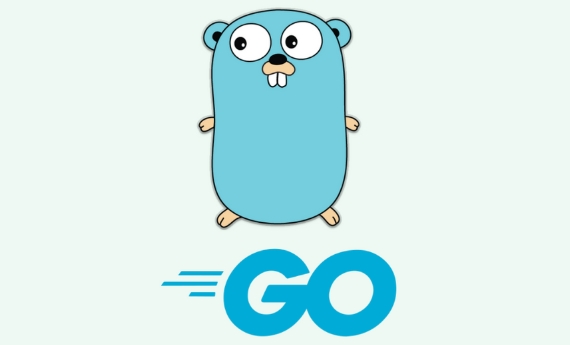Use multi-stage builds to separate compilation and deployment, reducing image size and improving security by excluding the Go toolchain from the final image. 2. Use minimal base images like Alpine or distroless to keep the image small and secure, avoiding unnecessary packages and tools. 3. Optimize the Go binary by setting CGO_ENABLED=0, using -ldflags="-s -w" to strip debug symbols, and optionally compressing with UPX for smaller size. 4. Secure the image by running as a non-root user, pinning base image versions, dropping unnecessary capabilities, and scanning for vulnerabilities with tools like Trivy or Snyk. 5. Optimize CI/CD performance by leveraging Docker layer caching—copy go.mod and go.sum first, use --cache-from, and enable Go module caching. 6. Add production features like HEALTHCHECK to monitor application health, expose necessary ports, set environment variables for configuration, and include metadata using LABEL for traceability. A production-ready Go Docker image is small, secure, and reproducible, built using multi-stage builds, minimal bases, stripped binaries, non-root execution, and proper CI/CD optimization, resulting in a fast, safe, and maintainable deployment.

When building production-ready Docker images for Go applications, your goal is to create something secure, minimal, fast to build and deploy, and easy to maintain. Go’s static compilation makes it a great fit for containers, but you still need to follow best practices to get the most out of it.

Here’s how to do it right.
1. Use Multi-Stage Builds
Go compiles to a single binary, so you don’t need the Go toolchain in your final image. Use a multi-stage Docker build to separate compilation from deployment.

# Build stage FROM golang:1.22-alpine AS builder WORKDIR /app # Copy go mod files first for better caching COPY go.mod go.sum ./ RUN go mod download # Copy source code COPY . . # Build the binary (statically linked) RUN CGO_ENABLED=0 GOOS=linux go build -a -installsuffix cgo -o main . # Final stage FROM alpine:latest RUN apk --no-cache add ca-certificates WORKDIR /root/ # Copy the binary from builder COPY --from=builder /app/main . # Run the app EXPOSE 8080 CMD ["./main"]
Why it matters:
- Reduces image size (final image doesn’t include Go SDK)
- Improves security (no build tools in production)
- Leverages Docker layer caching for faster builds
2. Keep the Image Minimal
Use a minimal base image like alpine or distroless. Avoid ubuntu or full Linux distros in production.

- Alpine Linux (~5MB) is popular and works well if you need shell access for debugging.
- Google’s distroless images are even more minimal and secure—no shell, no package manager, just your app and runtime dependencies.
Example with distroless:
FROM golang:1.22 AS builder WORKDIR /app COPY go.mod go.sum ./ RUN go mod download COPY . . RUN CGO_ENABLED=0 go build -o main . FROM gcr.io/distroless/static-debian12 COPY --from=builder /app/main /main EXPOSE 8080 CMD ["/main"]
Note: Distroless has no shell, so debugging requires extra planning (e.g., use a debug sidecar or temporary Alpine image).
3. Optimize Build Settings
Make sure your binary is:
- Statically linked (
CGO_ENABLED=0) - Stripped of debug symbols (smaller size)
- Optimized for size or performance
You can reduce binary size with linker flags:
RUN CGO_ENABLED=0 GOOS=linux go build \
-ldflags="-s -w" \
-o main .-s: omit the symbol table-w: omit the DWARF debug info
Also consider using UPX for further compression (advanced, trade off startup time).
4. Secure Your Image
Even minimal images can be vulnerable if not handled properly.
Run as non-root user
FROM gcr.io/distroless/static-debian12 USER 65532:65532 COPY --from=builder /app/main /main CMD ["/main"]
Set minimal capabilities in Kubernetes or Docker (drop
ALL, add only what you need)Scan images for vulnerabilities using tools like:
Pin base image versions (avoid
latest)FROM alpine:3.19
5. Optimize for CI/CD and Caching
Speed up builds in CI by:
- Copying
go.modandgo.sumfirst (sogo mod downloadcaches unless deps change) - Using
--cache-fromin Docker or buildkit - Enabling Go module caching in CI
Example efficient layering:
COPY go.mod . COPY go.sum . RUN go mod download # Now copy and build code COPY . . RUN CGO_ENABLED=0 go build -o main .
This way, your dependencies are cached unless go.mod changes.
Bonus: Add Health Checks and Metadata
Make your container more production-friendly:
HEALTHCHECK --interval=10s --timeout=3s --start-period=5s --retries=3 \
CMD wget -qO- http://localhost:8080/health || exit 1
LABEL org.opencontainers.image.source="https://github.com/your/app"Also expose environment variables for config:
ENV GIN_MODE=release ENV PORT=8080
Bottom line: A production-ready Go Docker image should be small, secure, and built reproducibly. Use multi-stage builds, strip the binary, run as non-root, and choose minimal base images. It doesn’t take much extra effort, but makes a big difference in production.
Basically: build clean, ship small, run safe.
The above is the detailed content of Building Production-Ready Docker Images for Go. For more information, please follow other related articles on the PHP Chinese website!

Hot AI Tools

Undress AI Tool
Undress images for free

Undresser.AI Undress
AI-powered app for creating realistic nude photos

AI Clothes Remover
Online AI tool for removing clothes from photos.

Clothoff.io
AI clothes remover

Video Face Swap
Swap faces in any video effortlessly with our completely free AI face swap tool!

Hot Article

Hot Tools

Notepad++7.3.1
Easy-to-use and free code editor

SublimeText3 Chinese version
Chinese version, very easy to use

Zend Studio 13.0.1
Powerful PHP integrated development environment

Dreamweaver CS6
Visual web development tools

SublimeText3 Mac version
God-level code editing software (SublimeText3)

Hot Topics
 Strategies for Integrating Golang Services with Existing Python Infrastructure
Jul 02, 2025 pm 04:39 PM
Strategies for Integrating Golang Services with Existing Python Infrastructure
Jul 02, 2025 pm 04:39 PM
TointegrateGolangserviceswithexistingPythoninfrastructure,useRESTAPIsorgRPCforinter-servicecommunication,allowingGoandPythonappstointeractseamlesslythroughstandardizedprotocols.1.UseRESTAPIs(viaframeworkslikeGininGoandFlaskinPython)orgRPC(withProtoco
 Understanding the Performance Differences Between Golang and Python for Web APIs
Jul 03, 2025 am 02:40 AM
Understanding the Performance Differences Between Golang and Python for Web APIs
Jul 03, 2025 am 02:40 AM
Golangofferssuperiorperformance,nativeconcurrencyviagoroutines,andefficientresourceusage,makingitidealforhigh-traffic,low-latencyAPIs;2.Python,whileslowerduetointerpretationandtheGIL,provideseasierdevelopment,arichecosystem,andisbettersuitedforI/O-bo
 Is golang frontend or backend
Jul 08, 2025 am 01:44 AM
Is golang frontend or backend
Jul 08, 2025 am 01:44 AM
Golang is mainly used for back-end development, but it can also play an indirect role in the front-end field. Its design goals focus on high-performance, concurrent processing and system-level programming, and are suitable for building back-end applications such as API servers, microservices, distributed systems, database operations and CLI tools. Although Golang is not the mainstream language for web front-end, it can be compiled into JavaScript through GopherJS, run on WebAssembly through TinyGo, or generate HTML pages with a template engine to participate in front-end development. However, modern front-end development still needs to rely on JavaScript/TypeScript and its ecosystem. Therefore, Golang is more suitable for the technology stack selection with high-performance backend as the core.
 How to install Go
Jul 09, 2025 am 02:37 AM
How to install Go
Jul 09, 2025 am 02:37 AM
The key to installing Go is to select the correct version, configure environment variables, and verify the installation. 1. Go to the official website to download the installation package of the corresponding system. Windows uses .msi files, macOS uses .pkg files, Linux uses .tar.gz files and unzip them to /usr/local directory; 2. Configure environment variables, edit ~/.bashrc or ~/.zshrc in Linux/macOS to add PATH and GOPATH, and Windows set PATH to Go in the system properties; 3. Use the government command to verify the installation, and run the test program hello.go to confirm that the compilation and execution are normal. PATH settings and loops throughout the process
 Resource Consumption (CPU/Memory) Benchmarks for Typical Golang vs Python Web Services
Jul 03, 2025 am 02:38 AM
Resource Consumption (CPU/Memory) Benchmarks for Typical Golang vs Python Web Services
Jul 03, 2025 am 02:38 AM
Golang usually consumes less CPU and memory than Python when building web services. 1. Golang's goroutine model is efficient in scheduling, has strong concurrent request processing capabilities, and has lower CPU usage; 2. Go is compiled into native code, does not rely on virtual machines during runtime, and has smaller memory usage; 3. Python has greater CPU and memory overhead in concurrent scenarios due to GIL and interpretation execution mechanism; 4. Although Python has high development efficiency and rich ecosystem, it consumes a high resource, which is suitable for scenarios with low concurrency requirements.
 How to build a GraphQL API in golang
Jul 08, 2025 am 01:03 AM
How to build a GraphQL API in golang
Jul 08, 2025 am 01:03 AM
To build a GraphQLAPI in Go, it is recommended to use the gqlgen library to improve development efficiency. 1. First select the appropriate library, such as gqlgen, which supports automatic code generation based on schema; 2. Then define GraphQLschema, describe the API structure and query portal, such as defining Post types and query methods; 3. Then initialize the project and generate basic code to implement business logic in resolver; 4. Finally, connect GraphQLhandler to HTTPserver and test the API through the built-in Playground. Notes include field naming specifications, error handling, performance optimization and security settings to ensure project maintenance
 Choosing a Microservice Framework: KitEx/GoMicro vs Python Flask/FastAPI Approaches
Jul 02, 2025 pm 03:33 PM
Choosing a Microservice Framework: KitEx/GoMicro vs Python Flask/FastAPI Approaches
Jul 02, 2025 pm 03:33 PM
The choice of microservice framework should be determined based on project requirements, team technology stack and performance expectations. 1. Given the high performance requirements, KitEx or GoMicro of Go is given priority, especially KitEx is suitable for complex service governance and large-scale systems; 2. FastAPI or Flask of Python is more flexible in rapid development and iteration scenarios, suitable for small teams and MVP projects; 3. The team's skill stack directly affects the selection cost, and if there is already Go accumulation, it will continue to be more efficient. The Python team's rash conversion to Go may affect efficiency; 4. The Go framework is more mature in the service governance ecosystem, suitable for medium and large systems that need to connect with advanced functions in the future; 5. A hybrid architecture can be adopted according to the module, without having to stick to a single language or framework.
 Go sync.WaitGroup example
Jul 09, 2025 am 01:48 AM
Go sync.WaitGroup example
Jul 09, 2025 am 01:48 AM
sync.WaitGroup is used to wait for a group of goroutines to complete the task. Its core is to work together through three methods: Add, Done, and Wait. 1.Add(n) Set the number of goroutines to wait; 2.Done() is called at the end of each goroutine, and the count is reduced by one; 3.Wait() blocks the main coroutine until all tasks are completed. When using it, please note: Add should be called outside the goroutine, avoid duplicate Wait, and be sure to ensure that Don is called. It is recommended to use it with defer. It is common in concurrent crawling of web pages, batch data processing and other scenarios, and can effectively control the concurrency process.






